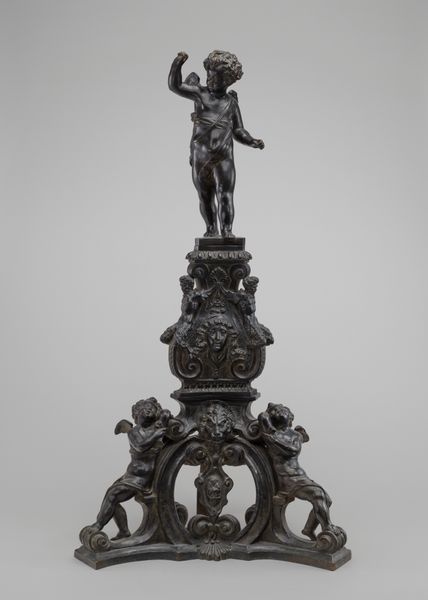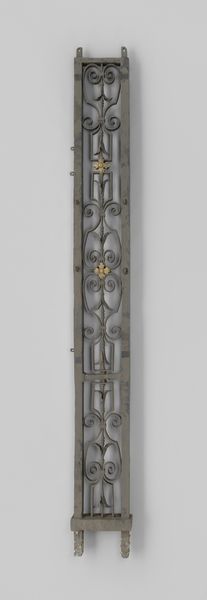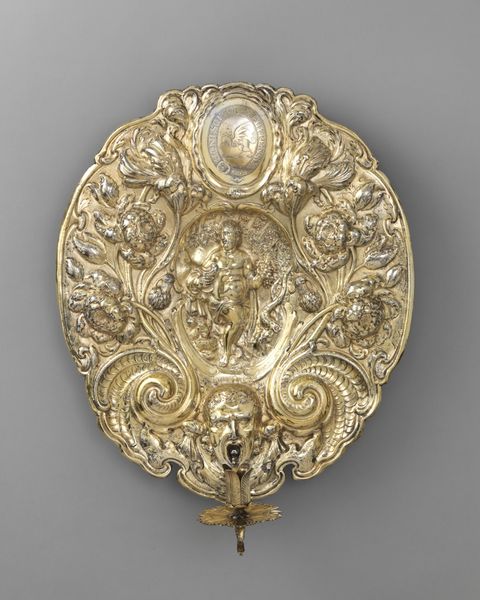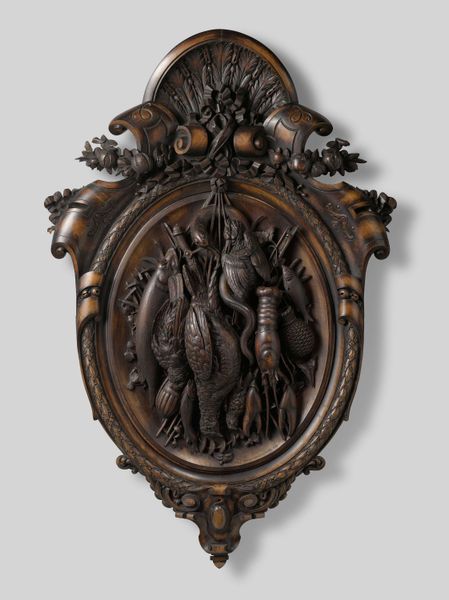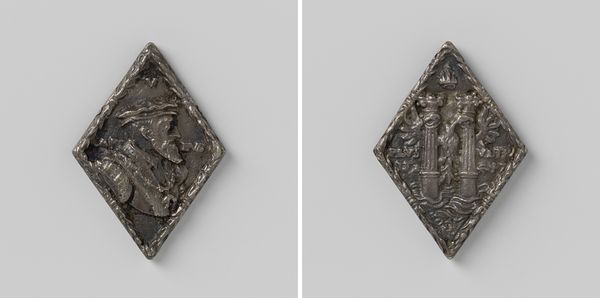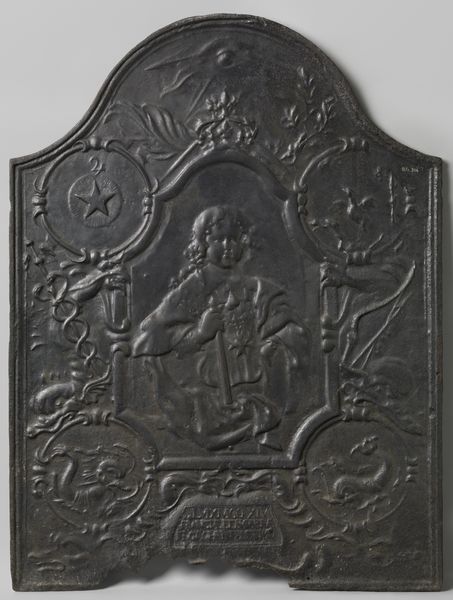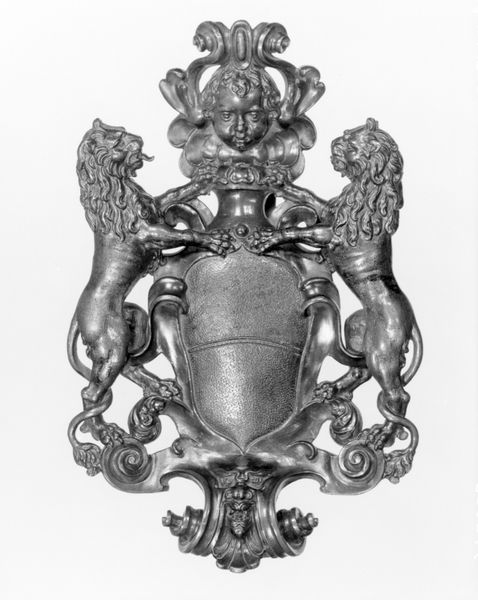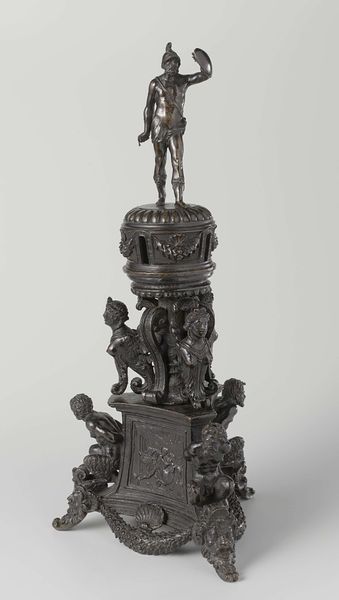
Copyright: Rijks Museum: Open Domain
Curator: This is a fascinating object – a silver book clasp made by W.N. Ernens between 1810 and 1812, titled "Book Clasp with the Resurrection of Christ." Editor: Immediately, the silvery metalwork, the intricate layering… it feels Baroque, doesn’t it? Dramatic and full of swirling motion despite its small size. Curator: Baroque certainly influences it. The material speaks volumes; silver, chosen for its malleability, allowing the maker to achieve such detailed narrative scenes on such a small scale, but also for its association with wealth and religious ceremony. Consider the labour involved in its creation, the skills of the silversmith, and the value placed on devotional objects during this period. Editor: Yes, and that devotional context is key. The resurrection imagery itself is a powerful statement about triumph over death and the promise of salvation, but seeing it used on a functional object, like a clasp for a book, connects it directly to the spread of religious doctrine through text, and thus, the role of religion in influencing cultural attitudes toward mortality and life beyond it. It suggests the owners' need to visibly profess faith. Curator: Precisely. Ernens has compressed several scenes into a small, functional item: we see soldiers guarding Christ's tomb, his ascent, and likely his appearance to Mary Magdalene after the resurrection. The book, thus clasped, becomes almost a reliquary itself. It shifts the symbolic role of scripture toward both spiritual and secular authority. Editor: What's interesting to me is also who this object served and for what purpose. Who made the economic calculation to acquire something as intricate and labor intensive? What statement were they hoping to make? These objects tell such unique stories if we are only willing to look through the right lens. Curator: Absolutely. Every aspect—from the material and labor involved to its owner and how the piece has aged through its journey with faith is worth exploring. Editor: It leaves me thinking about the intersection of religious faith and political identity in 19th-century Holland. So much is suggested within that small form!
Comments
No comments
Be the first to comment and join the conversation on the ultimate creative platform.




